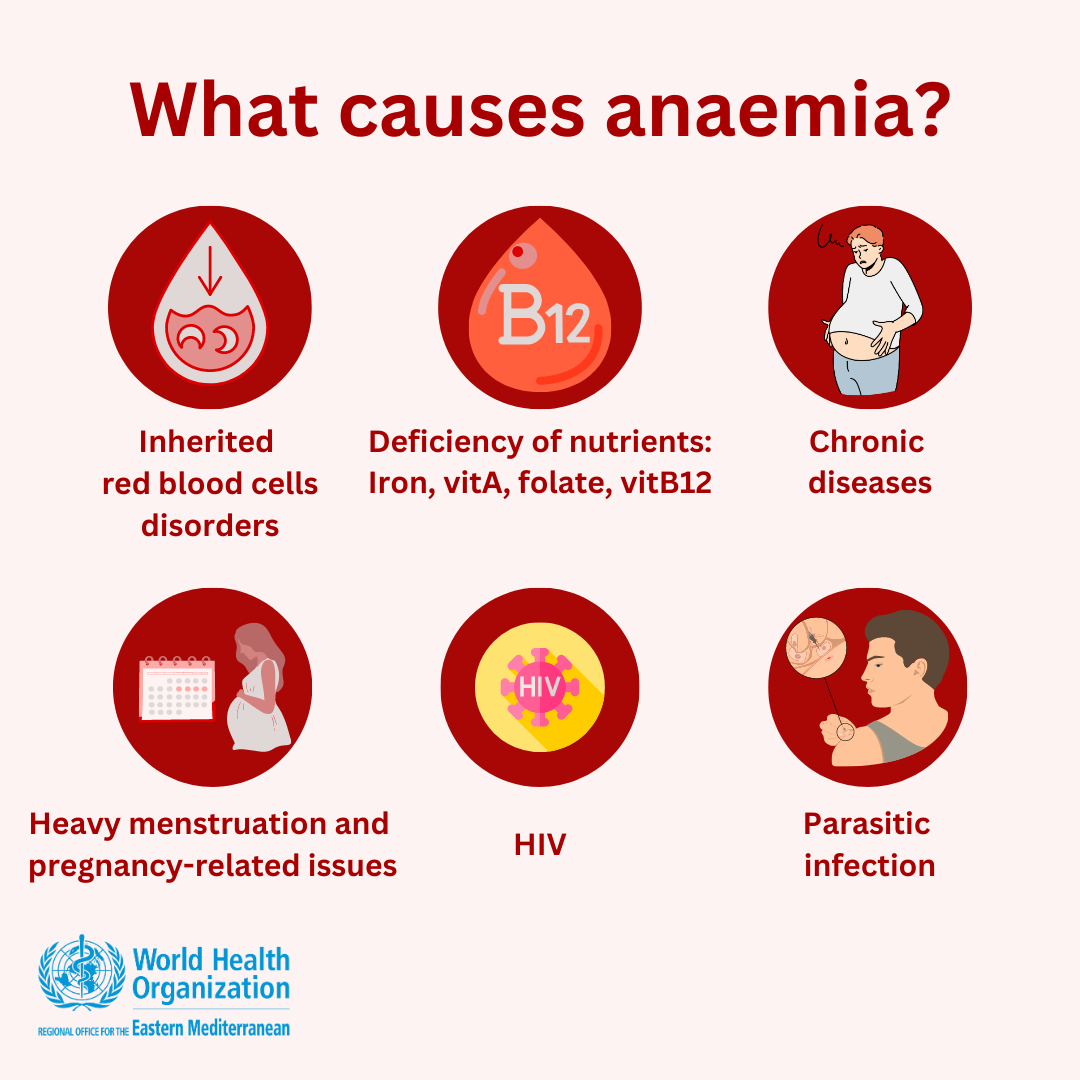Summary:
Anemia is a health condition entailing the body not having enough healthy red blood cells or hemoglobin to carry oxygen to the body’s tissues. Hemoglobin is an imperative protein in red blood cells that carries oxygen from the lungs to all other organs in the body. There can be many different ranges of severity and periods as to which anemia lasts in a person’s body. Each form of anemia has its own characteristics and effects. Many people with anemia have to seek treatments such as specific diets, supplement intake, and even medical procedures.
Description:
Through research I have discovered that there are five types of anemia. Aplastic anemia, iron deficiency anemia, sickle cell anemia, thalassemia, and vitamin deficiency. To briefly outline the different kinds, aplastic anemia is a condition where your body stops producing a sufficient amount of new red blood cells. It is rare and serious and can develop at any stage. Iron deficiency anemia is a common type and is when your blood lacks adequate healthy red blood cells. Mostly caused by having insufficient iron and then in turn, your body can’t produce enough hemoglobin. Sickle cell anemia is apart of a group that makes up sickle cell disease and it involves the shape and function of red blood cells. Thalassemia is an inherited blood disorder best described as your body not having enough hemoglobin. Normally treatment can look like getting blood transfusions if it becomes serious. Lastly, vitamin deficiency anemia is where you have a lack of red blood cells but the cause of it is having lower amounts of vitamin B-12 and folate. Similar to iron deficiency anemia, you can take supplements as treatment and to compensate for the lack of these vitamins and proteins your body is unable to produce itself.
:max_bytes(150000):strip_icc()/VWH-TheresaChiechi-SymptomspfAnemia-Standard-88571f949860407d93615a60883e36db.jpg)
Though all the different types of anemia do have their own side effects, the main effect of all types that is common is fatigue and dizziness. No matter which one a person may suffer from, having the lack of these vitamins in their body and having low blood cells will ultimately cause a lack of oxygen being delivered. When the body is oxygen deprived you will definitely experience symptoms such as headaches, dizziness, nausea, fatigue, and shortness of breath. It’s also very common to have cold hands and feet and chest pains. You should always seek treatment and see a doctor if you are having symptoms like these because of how severe it can be for your body. 
Anemia can have many different causes. Some include lack of vitamin B-12 and iron, as explained above. But some of the more serious reasons that your body may not be producing enough hemoglobin could be because of an outside disease such as Celiac’s, which effects the inside lining of your stomach and how well nutrients are absorbed, a poor diet, or a surgical procedure where part of the stomach or intestines were removed.
There are a lot of locations in your body where new red blood cells are produced, but a majority are produced through the bone marrow. Red blood cells last between 90-120 days, and then parts of your body will remove the old ones. A hormone named epo, produced from the kidneys then signal your bone marrow to produce more when you need them. Hemoglobin is inside the red blood cells and carries oxygen, and they also give red blood cells their color. They are crucial to keep red blood cells alive and healthy which is why anemics, who are lacking hemoglobin, struggle with symptoms that come from oxygen loss.
News Articles:
The first article I read about was from Washington Post, which I found a pretty interesting topic because it talked about how senior citizens who take aspirin could be at risk to develop anemia. https://www.washingtonpost.com/wellness/2023/07/24/low-dose-aspirin-anemia/
To summarize, research shows that older people who take daily doses of aspirin are 20% more likely to develop anemia. The experiment involved 19,114 people who were mostly 70+ who did not previously have anemia and were generally healthy considering the factors. At random, they were selected to take a low dosage of aspirin or a placebo everyday for five years straight. In that time, the select participants who were taking the aspirin had blood tests that showed a significant decrease in the hemoglobin in their red blood cells after the five years. Read it to find more about their findings!
Next, NBC published an article in July 2023 explaining how iron deficiencies are often missed in young women. https://www.nbcnews.com/health/health-news/iron-deficiency-often-missed-young-women-girls-research-finds-rcna92046
The article goes on to say how an underdiagnosed deficiency could be the lead cause of fatigue, foggy brain and concentration problems in 1 in 4 adolescent females in the United States. There was a study published that was mentioned in the article with findings that said 40% of American teenage girls and young women have low levels of iron. “A lot of times symptoms are missed because they are subtle”, a licensed doctor by the name of Weyand explains in the article. Another reason it is so common specifically in females is because menstruation cycles are a contribution to iron deficiency because of the blood loss. This was also proven because there was a study done on the red blood cell numbers and iron levels in females who were experiencing a period every month as opposed to girls who hadn’t gotten their periods yet. This was a very intriguing and informational article to me.
Sources Cited:
“Anemia.” Mayo Clinic, Mayo Foundation for Medical Education and Research, 11 May 2023, www.mayoclinic.org/diseases-conditions/anemia/symptoms-causes/syc-20351360.
What is Anemia?. Pennmedicine.org. (n.d.). https://www.pennmedicine.org/for-patients-and-visitors/patient-information/conditions-treated-a-to-z/anemia
Felson, S. (2020). Understanding Anemia — the Basics. WebMD; WebMD. https://www.webmd.com/a-to-z-guides/understanding-anemia-basics